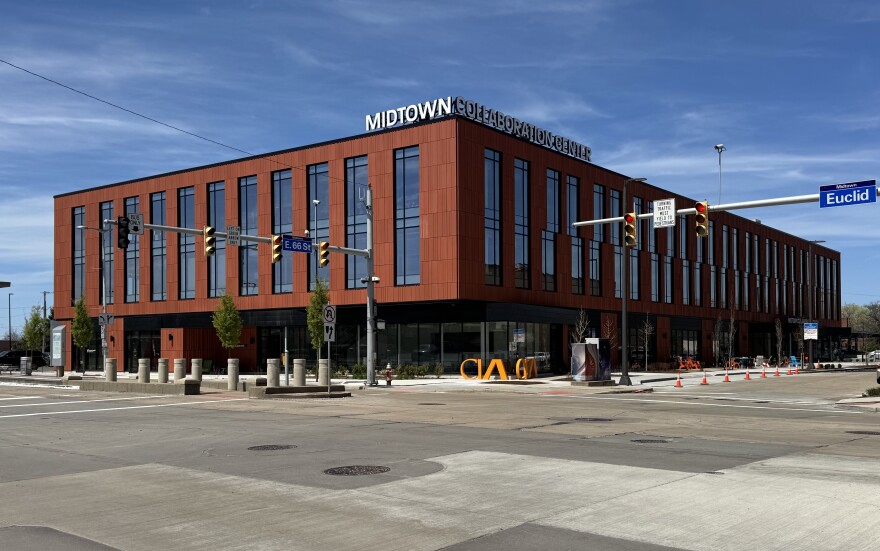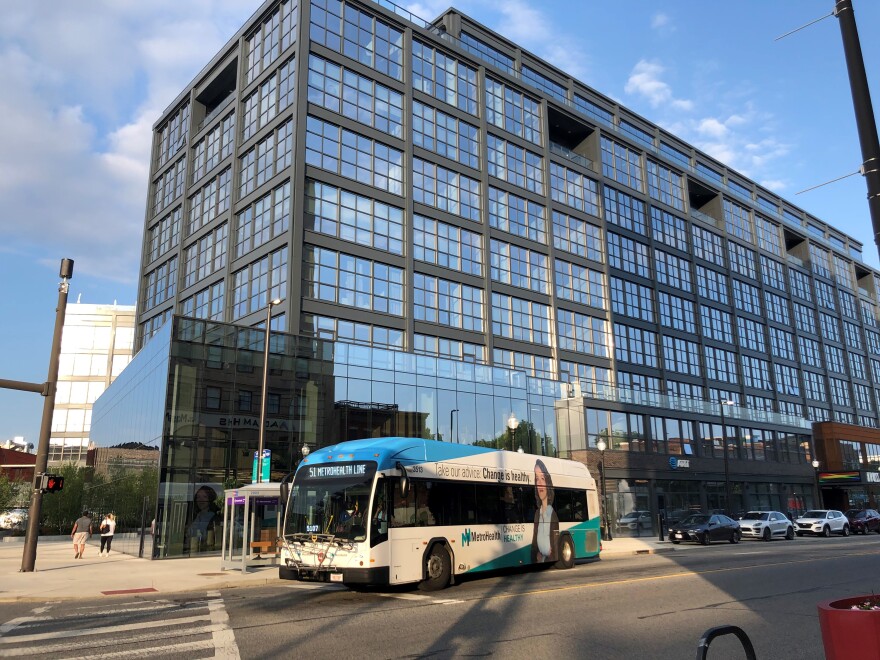Cuyahoga County on Monday announced a new loan program to encourage walkable, transit-oriented development, or TOD, across a region long characterized by sprawling communities designed for automobiles.
The county’s Department of Development will offer loans between $150,000 to $2.5 million from its existing loan pool totaling roughly $15 million annually to help developers fill financing gaps in transit-oriented development projects.
“This is one more piece of a puzzle that can assist in building a more transit-friendly and walkable Cuyahoga County,’’ Patrick Hewitt, the county’s planning manager for strategy and development, said in an interview before the announcement of the new program.
Hewitt and Mary Cierebiej, executive director of the Cuyahoga County Planning Commission, said the county wants to encourage dense, walkable development along existing, high-frequency transit routes for buses or rapid transit rail lines operated by the Greater Cleveland Regional Transit Authority.
Such development could help communities repurpose underused urban land and rebuild their tax base after decades of outmigration, they said. It can also make housing more affordable by reducing the cost of living, they added.

The annual cost of owning a car is more than $12,000, according to the American Automobile Association. The cost of surface parking lots or garages also drives up the cost of housing construction, which can get passed on to residents through higher rents.
In a news release issued Monday, Cuyahoga County Executive Chris Ronayne called TOD “smart growth in action — strengthening local ties, boosting our economic and transportation infrastructures, and ensuring resources are within reach of all of our residents.”
The first deadline
The deadline for the first round of loans is Sept. 29. Additional applications will be accepted on a rolling basis, Hewitt said.
Applications will be scored and selected for further vetting. The first loans could be approved by late 2025 or the first quarter of 2026. A webinar on the program is scheduled for 2 p.m. on Sept. 9. Information will be posted on the loan program website.
Requirements for the loans stipulate that:
- Loans may not exceed 40% of the project cost.
- Interest rates may be as low as 3.9%.
- For every $150,000 loaned, the project must create at least one job. In other words, Hewitt said, purely residential projects are not eligible. The county wants to see TOD with mixed uses, such as housing plus offices, restaurants and retail.
County officials said that its Revolving Economic Development Loan Fund distributes approximately $15 million annually. Roughly $12 million is repaid every year.
Ongoing effort
The new loans for transit-oriented development are the latest part of a county effort that started in 2022. County planners studied 22 corridors along major transit routes fanning out from Cleveland into more than two-dozen county communities where transit-oriented development would make sense.

Interested parties can explore county-identified TOD zones through a new mapping tool on the county’s website.
Research completed in 2023 showed that market demand for transit-friendly development is strong, but most TOD-style development is occurring in the City of Cleveland in areas including Ohio City, Downtown and University Circle.
In a 2024 county survey of 64 developers and development professionals, respondents said the inability to complete multilayered “stacks” of capital to fund new projects is one of several key barriers to transit-oriented development.
“We heard that feedback,’’ Cierebiej said. “We're hoping that this [loan program] shows that the county is interested and TOD is a priority and trying to be a partner in how we move this forward.’’
The county shared its latest thinking on transit-oriented development with developers, transit officials and community leaders at a summit in June.
The role of zoning
Research by county planners showed that zoning, a power controlled by municipalities, not the county, often discourages transit-oriented development by requiring large minimums for parking or ruling out street frontages with retail and restaurants fronting sidewalks.
In response, the county developed a model TOD zoning code as a guide for localities that wish to adopt it in some form. Cleveland suburbs studying such changes include Garfield Heights and Lakewood, Hewitt said.
Fairview Park is also considering transit-oriented zoning for Lorain Road, and neighboring North Olmsted is also looking at zoning the same corridor for a wider range of land uses, Hewitt said.
Those studies dovetail with efforts by the RTA to plan a new bus rapid transit route extending through those communities to Downtown Cleveland.
After working with county planners, South Euclid adopted new zoning in May to encourage what the city describes on its website as “a transit-friendly downtown hub’’ at Mayfield and Green roads, where "future redevelopment will be a dense, walkable mix of offices, retail, entertainment, and residential living.’’
“We can work with communities to keep moving forward, especially in areas that they would like to see development like this happen,’’ Hewitt said.




